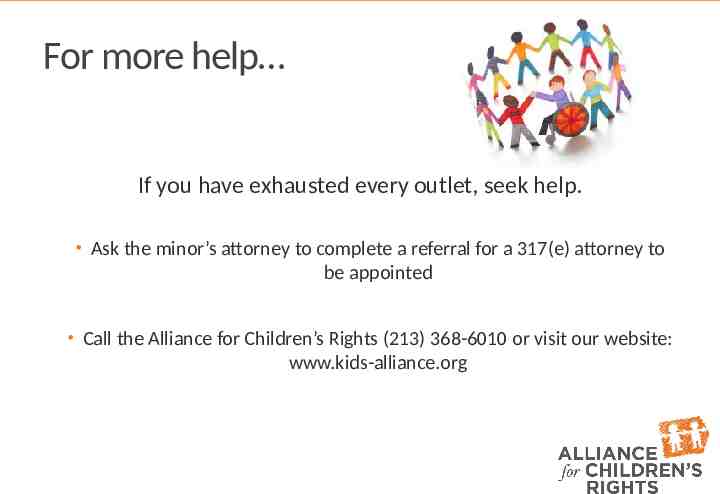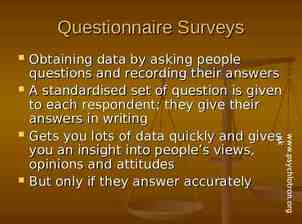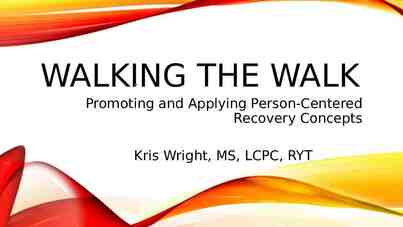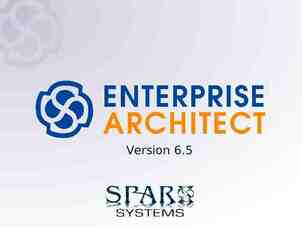SUPER SPECIAL EDUCATION ADVOCACY Presented by: Cindy Rodas,
81 Slides520.16 KB

SUPER SPECIAL EDUCATION ADVOCACY Presented by: Cindy Rodas, Education Advocate

WHAT ARE WE GOING TO TALK ABOUT?

Overview Quick Review: Special Education Basics For more, see “Special Education” presentation slides . What are the warning signs that a student might need a higher level of special education services? (Internal and External) What can you do if a student has higher-level behavior or mental health needs at school? (FBA, BSP, ERMHS) What are the different placement options for students with high levels of special education needs? (NPS, Residential Placement) Common Complications in IEPs (Consent, Moving, Residency) What if a student with special education needs gets involved in school discipline? (Suspensions, Expulsions, Manifestation Determinations, Interim Alternative Educational Placements)

REVIEW: WHAT IS SPECIAL EDUCATION?

Special Education Students with disabilities have a right to special education and related services. These are described in an Individualized Education Program (“IEP”). This is an education program that is individualized to meet the student’s unique needs based on their disability. FAPE: Free Appropriate Public Education The disability must prevent the student from benefiting from their education. Related Services are “such developmental, corrective, and other supportive services as may be required to assist a child with a disability to benefit from special education”.

REVIEW: WHO HAS THE LEGAL AUTHORITY TO MAKE EDUCATION DECISIONS?

What are education rights? An Education Rights Holder (ERH) has the legal right to make education-related decisions for a student, including: Requesting records, Requesting special education assessments, and Consenting to special education services and placements in the Individualized Education Program (IEP). An IEP is a contract between the ERH and the school district for special education services.

WHAT ARE THE WARNING SIGNS THAT A STUDENT MIGHT NEED A HIGHER LEVEL OF SPECIAL EDUCATION SERVICES?

9 A student may have a need for higher level services (whether or not they already have an IEP) if they exhibit: External: Increased/frequent absences Discipline issues Including informal discipline like being “sent home” Defiance to teachers Suspensions and/or expulsion Odd/erratic behaviors Violent/aggressive outbursts Internal: Social withdrawal Decline in abilities Flat affect Constantly tired Depression Mood swings

IF I SEE WARNING SIGNS, WHAT SHOULD I DO?

11 If a Student Already has an IEP, Request an IEP Meeting When requested, a school district must hold an IEP within 30 days. At the meeting, discuss your concerns, using as much specific evidence as possible (e.g., number of dates of school discipline or calls home, evidence of psychiatric diagnosis or hospitalizations). A school/district is required to offer the appropriate services for a student when the need becomes apparent. The law does not require a specific assessment to grant behavior services, though many school districts utilize internal policies that require further assessment, or special steps.

12 Requesting Assessments If you do not already know what a student needs, the best first step is to request specific assessments. Who can refer a student for a special education assessment? Anyone How do you make the request? The ERH should submit the request in writing (and keep proof of when it was submitted). An assessment plan or written refusal to assess due to ERH in 15 calendar days. Once signed, an IEP is due within 60 calendar days. What should the assessment request include: “I request that my student receive assessment for the following reasons ”

WHAT IF THE DISTRICT REFUSES TO ASSESS?

14 Suspected Disability Standard In order to find a duty to assess, you need only demonstrate an area of “suspected disability.” The courts have defined this as a very low threshold. Even if a student is not exhibiting enough of a deficit to warrant eligibility for services, if they are evidencing a “suspected area of disability,” it is the district’s obligation to assess the student. If the district denies assessment, make sure you have shared any evidence you have of a suspected disability and point out the low standard.

Denial Based on Attendance Attendance: Attendance problems do not change a district’s duty to assess if a student is demonstrating a suspected disability. If a student has a history of poor attendance, a district may refuse to make a student eligible for special education services only if they can show that the poor attendance is the “primary” cause of the deficits the student is displaying (not just one factor). Thus, a district must first assess to determine all causes of a student’s problems. Then, if they find no qualifying disability and the student’s attendance is the only cause for them doing poorly in school, they can find them not eligible for services.

Denial Based on Attendance Example: Student’s depression causes them to sleep all the time and thus miss school. Depression may be an underlying disability which would make them eligible for services. While the student is skipping classes, the attendance issue is just one factor in why the student is not doing well in school. In this case, the school would still have a duty to assess.

WHAT IF MY STUDENT MOVES WHILE THE SCHOOL IS IN THE PROCESS OF ASSESSING?

18 Moving Between Districts in the Middle of an Assessment Legally, the 60 day timeline to complete an assessment continues uninterrupted! The only exception is if the new district is making reasonable progress to ensure “prompt completion” AND the parent and new district agree to change the timeline in writing. 34 C.F.R. § 300.301(d) and (e).

19 Moving Between Districts in the Middle of an Assessment Despite the law, you will need to follow up with both the original school district and the new school district to ensure that they complete the assessment.

WHAT IF MY STUDENT IS FOUND ELIGIBLE UNDER THE CATEGORY OF EMOTIONAL DISTURBANCE?

21 Emotional Disturbance (”ED”) Eligibility Category Myth: A district can only assess a student for an emotional disturbance if the parent gives special permission. Fact: A district is required to assess a student in all areas of suspected disability. If a student has demonstrated a potential emotional disturbance, the school should assess for it. Tip: If you think this category may apply to your student, specifically request that the school look for it when assessing. Even though it is not required, it may save you some time and hassle.

22 Emotional Disturbance (”ED”) Eligibility Category Myth: If a student is found eligible under ED, they will not be able to join the military, it will stay with them forever, etc. Fact: An IEP is confidential. It will be up to the student and the education rights holder whether any information about his or her IEP is ever shared outside of K-12 school. Tip: A student is best served by the appropriate eligibility category. If ED is appropriate for their needs, that should be the category chosen.

23 Emotional Disturbance (”ED”) Eligibility Category Myth: Services such as non-public schools, residential placements, and high-level counseling are only available for students classified as ED. Fact: This may be district policy, but a district is required to provide an “appropriate” educational placement and services for any student found eligible under and category for special education. This means that all services should be available to any student if needed. For example, a student eligible for the speech and language category might need counseling services. This would be appropriate. Tip: If a student can be appropriately categorized in the ED category, it is best to use this categorization because it can simplify getting the other services needed.

WHAT IF MY STUDENT IS EXHIBITING MAJOR BEHAVIOR PROBLEMS?

25 Functional Behavioral Analysis If the student is exhibiting major behavioral problems, request a Functional Behavioral Analysis (“FBA”). A good FBA includes an analysis of the causes of the undesirable behavior, including the environmental factors which provoke and sustain the behavior, as well as an identification of the likely interventions or strategies for addressing the undesirable behavior.

26 Functional Behavioral Analysis It also requires observation of the student and a tracking of the occurrences of the undesirable behavior over time. It is important to determine the antecedents of the behavior, or the triggers which come before or cause the behaviors. For example, a student with Oppositional Defiance Disorder may only become oppositional when demands are placed upon him; for this type of student, it may be necessary to always provide options.

27 Functional Behavioral Analysis It is also important to analyze the consequences of the behavior. These can include both positive consequences for the student as well as the reactions and management styles of the adults around the student that might contribute to or ameliorate the presenting problems. If the ODD student’s behavior consistently removes the requirement that he fulfill the demands placed upon him, his behavior is functioning to lessen his stress level. He receives a positive consequence for the behavior, thus motivating him to continue using this strategy to manage his anxiety levels.

28 Requesting an FBA What should the assessment request include: “I request that my student receive a functional behavioral analysis for the following reasons ” Normal assessment timelines apply: 15 days to assessment plan/written refusal; 60 days to IEP Remember: A school/district is required to offer the appropriate services for a student when the need becomes apparent. The law does not require a specific assessment to grant behavior-related services, though many school districts utilize internal policies that require further assessment, or special steps.

29 Behavior Support Plan (“BSP”) Behaviors that are interfering with a student’s ability to benefit from their education should be addressed in their IEP whether or nor a formal FBA was completed. Examples: inattention; not completing work; defiance; verbal or physical aggression Behaviors should be addressed through a BSP, a plan that outlines the problem behavior, what triggers it, how to help the student avoid it, and how to address it if/when it occurs. Example: inattention; triggered when the work becomes too difficult; function is work avoidance; required to work for a period of time to earn a reward (such as computer time) on a decreasing time increment (5 minutes 3 minutes) If a district is unwilling to create a BSP, these behaviors should be addressed through the present levels of performance and behavior goals set forth in the IEP.

WHAT IF I BELIEVE MY STUDENT NEEDS A HIGHER LEVEL OF MENTAL HEALTH SERVICES?

Educationally Related Mental Health Services (ERMHS) History: Used to be provided through AB 3632, AB 2726, Chapter 26.5 . AB 3632 said the Department of Mental Health must pay for therapy and residential placement services for students who need it to benefit from their education. AB3632 was repealed in 2011. Despite repeal, ERMHS are still required in federal and state law. ERMHS must now be provided and paid for by a student’s school district.

HOW DO I GET THESE SERVICES FOR MY STUDENT?

33 Review: How do I Request Assessment for ERMHS? What should the assessment request include: “I request that my student receive an assessment for educationally related mental health services for the following reasons ” Normal assessment timelines apply: 15 days to assessment plan/written refusal; 60 days to IEP Remember: A school/district is required to offer the appropriate services for a student when the need becomes apparent. The law does not require a specific assessment to grant ERMHS, though many school districts utilize internal policies that require further assessment, or special steps.

34 ERMHS Options Individual, group, family, or parent counseling or therapy Positive behavior intervention services 1:1 behavior aide Therapeutic behavior services (TBS) Medication management Day treatment Residential treatment Case management See ERMHS Services Handout for more details.

35 ERMHS vs. DIS Counseling DIS: Designated Instructional Services – California’s term for “related services” DIS counseling is a lower level of counseling services provided by a school, often by a school psychologist. School psychologists are credentialed like teachers, but are usually not licensed. Most school psychologists have minimal training in mental health issues

36 ERMHS vs. DIS Counseling ERMHS counseling is a higher level of services. ERMHS counseling can and often should be provided by a licensed psychologist/therapist. ERMHS counseling can be provided at the school or in another environment.

37 The Name Game Several Los Angeles County school districts have begun offering “Educationally Related Intensive Counseling Services” (“ERICS”) on IEPs when ERMHS are requested. If a district proposes putting ERICS into an IEP, rather than ERMHS, ask them to define what that service will look like, and who will provide it. If the counseling will be carried out by an intern, it may not be appropriate, and you can consent “for purposes of implementation only.” (See Consenting to the IEP) If the service and provider are acceptable, ask that as much detail as possible is included in the notes section of the IEP.

HOW SHOULD I REQUEST SPECIFIC SERVICES OR PLACEMENTS?

39 Requesting Services or Placement Specifically request the service or placement you want. “ services are appropriate/necessary for my student because ” Never say “best”!!! Although you will always want what is in the best interest of your student, the law only requires schools to offer what is “appropriate” and allows them to progress in their educational program. While all students might do better with the services of 7 individuals tutors that monitor them throughout the day, that is probably not necessary for most students to progress. This means you can think about how your student will best be served, and then explain why that service/placement is “appropriate” and “necessary.” Old analogy from case law: “Chevy” not “Cadillac”

40 Getting Services or Placement into the IEP Once a service or placement has been discussed, have the school either grant or refuse it in writing in the IEP document. The IEP is a contract, if something is in it, it is enforceable. If it is not in the document, it is hard to argue what happened at the meeting. Even if the service discussed is something the school says that they offer all students, for example access to a specific remedial reading program or group counseling, make sure it is noted somewhere in the IEP. If the school objects, point out that they can state that it is provided to the student as part of the program all students receive. Remember, the student may move schools and the IEP moves with them. If the service is not in the document, there is no way to enforce that the student receives the service in the new school.

41 Specifics Must be Added into the IEP Make sure that the frequency and duration of the service is clearly written on the IEP document. Even if the district’s IEP form does not allow for room for specifics, ask that they include the details in the notes portion of the IEP. Ex. 1 hour per week of individual therapy services for the student, provided by a clinical psychologist, in a separate classroom.

WHAT PLACEMENT OPTIONS ARE AVAILABLE FOR STUDENTS WITH IEPS?

Placement Options Options Within A Local Public School: General Education Resource Specialist Program (RSP)/Specialized Academic Instruction (SAI) Push-In Model: Special education teacher works with student in the general education classroom Pull-Out Model: Special education teacher takes student into a separate classroom to work with them

Placement Options Options Within A Local Public School: Special Day Class (SDC) Smaller classroom exclusively for special education students. Sometimes specialized based on disability, other times mixed. Usually moves more slowly than a general education class and allows for development of remedial skills. If these settings cannot meet the needs of the student, he or she may require a more restrictive setting

More Restrictive Settings: Non-Public Schools Non-Public School (NPS): a therapeutic placement designed for students with the most intense emotional, behavioral, or academic needs. It is privately operated, but the placement will be paid for by the district. If a student has an IEP that requires NPS placement, the district should offer several options of NPSs. Some options are much better than others, and each caters to certain types of students (for example, some are more focused on behavior difficulties and others are focused on very low academics). You should encourage the student and ERH to visit each option before choosing one.

More Restrictive Settings: Non-Public Schools Some good questions to ask when touring: What is the student to teacher ratio? What type of school-wide behavior intervention/reward systems do you use? What are the typical special education eligibility categories that attend this school? What related services are offered? (Ask specifically about any services that your student requires.) What enrichment activities are offered (e.g., art, music, sports)? Which particular classroom(s) would this student be enrolled in? Ask to observe a lesson in this room.

More Restrictive Settings: Residential Placements (RCL Level 14) For students with the most extreme needs, a residential placement may be required. This includes situations were a student’s educational needs are inseparable from the student’s emotional, social, and mental health needs. A residential placement is a 24 hour placement where a student lives and attends school in the same location. The program, including the non-medical care and room and board, must be provided at no cost to the parents of the student. For LA County students, there are options both inside the state/county and outside.

Residential Placement: IEP vs. DCFS/Probation Through the IEP: Must demonstrate severe mental health needs at school Often requires an ERMHS assessment which means waiting the 60 day timeline Biological parents and legal guardians can place a student here (even over the student’s objection) Other ERHs may need court approval

Residential Placement: IEP vs. DCFS/Probation Through DCFS/Probation Can demonstrate severe mental health needs in any environment (home or school) Must be screened through the Interagency Screening Committee; ask the social worker to refer the student for screening or ask the court to order it Screenings can happen relatively quickly (screenings occur once per week) Requires an Inter-state Compact on the Placement of Children (ICPC) for out of state placements which can also take time Youth aged 14 must consent to placement in open court before it is implemented

Moving through the Steps of Restrictive Placements Some districts require a student to attempt each level of service before moving up to the next. (For example, fail in an SDC, and then an NPS, before residential placement will be considered, or try DIS counseling prior to consideration of ERMHS.) While this may be appropriate in some cases, if the least restrictive environment that a student can be successful in is a the higher level of placement or service at the time of their first IEP, then this is where they should be placed immediately.

WHICH DISTRICT IS RESPONSIBLE FOR PAYING FOR AND IMPLEMENTING PLACEMENT AND SERVICES?

52 Residency: Four Rules The Basic Rule: Traditional Families The Foster Youth Rule The Juvenile Detention Rule The Residential Placement Rule

53 The Basic Rule: Traditional Families The school district where a minor resides with his/her parent(s)/guardian(s) is responsible for educating that student. Cal. Educ. Code section 48200; Katz v. Los Gatos-Saratoga Joint Union High Sch. Dist., 11 Cal. Rptr. 3d 546, 553 (Ct. App. 2004); Union Sch. Dist. v. Smith, 15 F.3d 1519, 1525 (9th Cir. 1994)

54 The Foster Youth Rule When a youth is in a licensed children’s institution (i.e. group home), licensed foster family home, or family home by court order (i.e. relative placement), then, the school district where the student lives is responsible for educating that student. Cal. Educ. Code section 48204

55 The Juvenile Detention Rule When a student is in a juvenile detention center (i.e. juvenile hall or camp), the County Office of Education is responsible for educating the student For Los Angeles county, this is the Los Angeles County Office of Education (LACOE) Cal. Educ. Code sections 48645.1 and 48645.2

56 The Residential Placement Rule If a student is living in a residential placement, the school district where the student’s court-appointed ERH lives is responsible for educating them. So, if you hold education rights as a CASA, the district that you personally live in would be responsible for funding the residential placement of your student if that placement was required. Cal. Educ. Code section 56028; Orange County Dep’t of Educ. v. Cal. Dep’t of Educ., 650 F.3d 1268 (9th Cir. 2011) this case took six years to resolve

57 Summary of Residency/Responsibility Responsibility usually follows the student. But, when a student is placed in a residential facility by a school district, the district where the ERH lives is financially responsible.

58 Practice! “Fanny” – In September, Fanny was detained in a Los Angeles County juvenile hall. In January, the court placed her at Harborglance group home in Long Beach. Her CASA holds education rights and lives in LAUSD. On April 1, an IEP team placed her in a residential placement in Utah.

59 Fanny What agency is responsible for Fanny’s education at the following times: September January April 1 (responsible for sending her to Utah) April 2 and on (maintaining the placement in Utah)

WHAT IF I ONLY AGREE WITH PART OF THE IEP?

61 Consenting to the IEP When signing the IEP, an ERH can consent to services they want but disagree with other parts of the IEP. Ex. “I consent to my student receiving 30 minutes per week of DIS counseling services but continue to believe my student requires 60 minutes a week of ERMHS therapy services provided by a licensed therapist.” OR When signing the initial IEP, an ERH can consent so that services can start without agreeing with what is offered. Ex. “I consent to the IEP for implementation purposes, but I do not agree with the decision regarding eligibility. I believe my student should be found eligible under the category of Specific Learning Disability.”

62 Stay Put If an ERH disagrees with any proposed change to an IEP, the student has a right to continue to receive a placement and services in accordance with the previous IEP until the district sues for due process and wins, or the ERH changes his or her mind. For example, if a school district believes that a student no longer requires placement in an NPS and wants to send them back to their local public school, but the ERH believes that the student continues to require an NPS placement, the student may remain at the NPS until there is resolution of the dispute.

WHAT IF MY STUDENT IS FACING SCHOOL DISCIPLINARY ACTION?

64 School Discipline (General Education) Suspensions Limit: Students may only be suspended for a total of 20 days per school year (30 days if they change schools). This includes partial days (for example, the day of the incident). Informal Suspensions: Students should not be sent home early or asked to stay home for a day without a formal suspension in writing. (The record is needed to document the number of days sent home.) Interventions: Unless the offense is so serious that a school must recommend expulsion (for example brandishing a weapon or sexual assault), a school is required to attempt other interventions prior to suspension or other discipline.

65 School Discipline (General Education) Expulsions Statements: Students may be asked by school administration or police to make an oral or written statement. Students may refuse to make a statement, but are usually not made aware of this option. These statements may later be used against the student in court or in an expulsion hearing. *Discuss these rights with students you are working with. Counsel students to politely decline making or writing a statement unless a parent or guardian is present (or not at all).

66 School Discipline (General Education) Expulsions Hearings: A formal hearing must be held and a decision to expel must be made by persons who do not work at the school. A student may bring an attorney to the hearing. Schools cannot expel a student without providing all documents in writing and formally inviting an education rights holder to a hearing.

67 School Discipline (General Education) Expulsions Right to Attend School: While expelled, students have a right to go to another school. The expelling school must assist the student in finding other school options. Usually, the main option offered is a community day school. Community day schools are usually filled with students who have been excluded from their local school due to behavior problems. If possible, explore other options for the student. For example, charter schools. student MUST attend school!

68 School Discipline (General Education) Expulsions Readmittance: If expelled, students must be given specific terms to meet that will allow them to apply for readmittance within 1 school year. (Example: passing grades and no suspensions). Once the time has passed, apply back to the school district for readmittance. This does not happen automatically. If you do not apply for readmittance, the student with remain expelled!

69 School Discipline and Special Education Special education students cannot be subjected to harsher punishments than non disabled students for the same offense. Special education students have special protections that non disabled students do not have. Special education students may, in certain circumstances, be disciplined to the same extent as non disabled students. Special education students always retain their right to receive a FAPE (i.e., services under their IEP), although they might receive these services in a different school setting.

70 10 Day Rule For short term suspensions of less than 10 days, the student may be suspended from school like any other student, without the services in their IEP. Long term suspensions (10 days) and expulsions are considered a change in placement for a student with an IEP. But remember: the student must continue to receive a FAPE during that time.

71 10 Day Rule If a student is suspended for 10 days or recommended for expulsion, a manifestation determination IEP meeting must be held. For suspensions, the school CANNOT suspend the student any more than 10 days until after the IEP is held. For expulsions, the manifestation determination IEP must be held within 10 school days of when the decision to recommend the student for expulsion was made.

72 Manifestation Determination IEP Analysis A manifestation determination IEP is a review of the relationship between the student’s disability and the behavior which caused the student’s suspension or expulsion. Participants (including ERH) must determine: 1.) If the conduct was caused by or had a direct and substantial relationship to the student’s disability or, 2.) Whether the student’s conduct was the direct result of the district’s failure to implement the IEP.

73 Manifestation Determination IEP Analysis If either is true, the behavior is deemed a manifestation of the student’s disability and the discipline in progress (suspension/expulsion) MUST STOP! If not a manifestation, the student can be disciplined (suspended 20 days/school year or expelled) like any other student.

74 Manifestation Analysis At the meeting, the team should consider all relevant information in the student’s file, IEP, teacher observations, from the ERH, etc. Example: A student who is eligible due to a learning disability, but who also has a behavior support plan for defiant behavior. If the student has been suspended for more than 10 school days due to defiant behavior, this is likely a manifestation of their disability!

75 Manifestation Analysis Regardless of whether the behavior is determined to be a manifestation or not, the student continues to have a right to receive FAPE: This means they have a right to the services and placement in their IEP. Unless they are placed in an IAEP, all programs and services in the IEP MUST be agreed to by the ERH! Hint: don’t agree to home school if you don’t think it will meet the student’s needs. If their behavioral needs are not being met, the district has a duty to conduct a behavior assessment and develop a behavior support plan If the student already has a behavior plan, the team must meet to review the plan and modify to account for changes in the student’s behavior.

76 Interim Alternative Educational Placement In extreme cases, a district can UNILATERALLY (without ERH agreement) change the placement of a student with a disability to an interim alternative educational placement without regard to whether the behavior is determined to be a manifestation of the student’s disability for ONLY 45 school days when a student: Carries or possesses a weapon to or at school, on school premises, or to or at a school function Knowingly possesses or uses illegal drugs, or sells or solicits the sale of a controlled substance while at school, on school premises, or at a school function; or Has inflicted serious bodily injury upon another person while at school, on school premises, or at a school function. Hint: serious bodily injury doesn’t mean scratches, bruises or even a broken bone; it must be VERY SERIOUS!

77 Home School The use of home based instruction can be appropriate, but must be evaluated on a case by case basis. If there is no alternative school or other similar public facility in the district, the IDEA does not require a district to place a student in a private school or facility. If placement at home meets the criteria of FAPE, it can be appropriate. If there are appropriate public schools in the district, they should be prepared to justify why a less restrictive alternative placement was not chosen. There are LOTS of other options: community day school, charter school, continuation school, etc.

78 Students Not Yet Eligible Students who have not yet been found eligible for special education, but find themselves facing 10 days of suspension or a recommended expulsion, may assert the protections provided by IDEA if it is determined that the district had knowledge of the disability prior to the behaviors which resulted in the discipline Examples of prior knowledge: (1) parents had expressed concern in writing to administrators or to the student’s teacher that the student was in need of special education services; (2) the parents had requested an evaluation; or (3) a teacher or other school personnel had expressed specific concerns about the student to the administrators In the absence of such knowledge, no IDEA protections are available.

WHAT IF I NEED HELP ADVOCATING FOR MY STUDENT?

80 317e Education Attorney The dependency and delinquency courts have the power to appoint education attorneys to represent foster youth. These attorneys can work with you to figure out the best plan for the youth and how to advocate for it. Keep in mind that it often takes time for the appointment process to be completed, and attorneys often have to undergo internal file reviews before they can begin work on a case. This means that they will be more useful in pursuing long-term solutions, rather than solving immediate crises.

For more help If you have exhausted every outlet, seek help. Ask the minor’s attorney to complete a referral for a 317(e) attorney to be appointed Call the Alliance for Children’s Rights (213) 368-6010 or visit our website: www.kids-alliance.org






